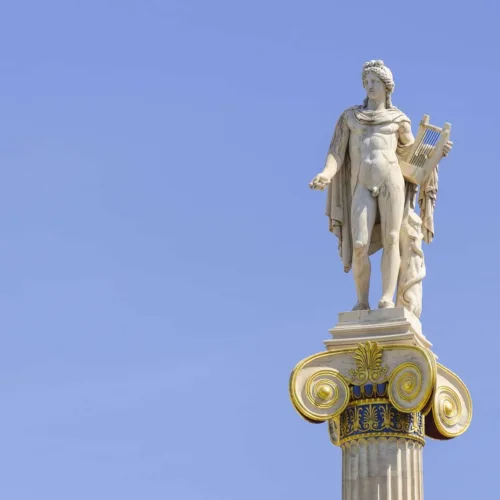by H.Ps. Phyllis W. Curott, J.D.
President Emerita, Covenant of the Goddess (COG). COG is one of the largest and oldest Wiccan religious organizations, with members in North America, Europe and Australia.
– Taken from A SourceBook for Earth’s Community of Religions
Wicca is a vital, contemporary spiritual path reviving the ancient, pre-Christian indigenous religion of Europe. It is a life-affirming Earth religion which is both old and new, “traditional,” and vibrantly creative. Wiccans experience the Divine as immanent, as embodied in the Universe, the world in all its aspects and in humanity, as well as transcendent. Therefore all of life is perceived as sacred and interconnected. Modern Wicca incorporates ancient and modern liturgy, ritual and shamanic practices by which people attune themselves to the natural rhythms of the Earth and the Universe, enabling them to experience communion with the embodied Divine. Wiccans honor nature as a profound spiritual teacher and devote themselves to the contemplation and integration of the spiritual wisdom inherent in the Earth’s cycles of seasonal transformation.
Wicca — also known as the Old Religion, Witchcraft, or the Craft — is derived from the old Anglo-Saxon word “wicce,” pronounced “witche,” giving rise to the commonly used but frequently misunderstood term Witchcraft. “Wicce” meant a practitioner of the Old Religion, and reflects the influence of the Old Norse word “vitke,” meaning a priestess, seer or shaman. The word pagan is from the Latin “paganus”, a country dweller. “Heathen,” another related term also misinterpreted as a pejorative, meant one who dwelt on the heath. All were European peoples who, like Native Americans and other indigenous groups, lived close to the Earth and respected their relationship to nature as sacred.
Wicca is non-dogmatic. There is no single leader or prophet, nor is there a Wiccan bible or literature of revealed and absolute truth. Rather, Wicca is a dynamic and accessible system of techniques, the mastery of which enables each individual to experience the Divine personally. Most Wiccans consider their practice a priest/esshood involving years of training and passage through life-transforming initiatory rituals. Priestesses and priests are respected as Elders and teachers of these techniques, for it is a basic Wiccan precept that each individual has the capacity and the responsibility to experience the sacred mystery that gives life true meaning.
It is a Wiccan tenet that spiritual insight is achieved through living in harmony with the Earth. Like the spiritual worldview and practices of Native Americans, Taoists and many indigenous Earth religions, Wiccan spiritual practices are intended to attune humanity to the natural rhythms and cycles of nature. Rituals therefore coincide with the phases of the moon, which are particularly significant for women, and the seasonal changes. Wiccans seek to live in a balanced way with nature and to practice their spirituality not only in sacred rituals but in the way they live each day. Thus the Divine is experienced not only in prayer, meditation, ritual, and shamanic work, but in gardening, preparing a meal, recycling trash, making love, giving birth, and growing old. Divine presence is felt in the air we breathe, the water we drink, the food upon our tables, the creatures and plants with which we share this beautiful planet, and the sacred Earth that nourishes and sustains us.
Our reverence for the Earth expresses our reverence for the Divine which it embodies and reflects a deep ecological concern which is more than pragmatic. As an embodiment of the Divine, the Earth is not treated as a utilitarian object, to be exploited, polluted and destroyed for man’s short-term greed. Rather it is inherently sacred in its value. This fundamental respect for the Earth as sacred has drawn many people to the practice of Wicca and, like other indigenous religions, may be one of its greatest contributions to a world imperiled by ecological crisis.
The Divine is also perceived and experienced anthropomorphically as well, though there is great diversity among Wiccans as to whether they characterize the Divine as exclusively feminine or as a multiplicity or dyad of feminine and masculine forms and metaphors. In contrast to most of the world’s religions, Wicca acknowledges the Divine as feminine as well as masculine. The Goddess, who is seen as both transcendent and immanent, is an essential aspect of Wiccan worship. She may be worshipped as the nameless single Goddess, or as any of the many aspects and names by which She has always been known. Personified as the Triple Goddess, the Great Mother, Isis, Gaia, Demeter, Cerridwen, Brigid, Oestara, Innana, Ishtar, Shekinah, Shakti, Kali, Amateratsu, and many others, the Divine feminine is also experienced in the energies of the Universe, the mysteries of the moon, the blessings of the Earth, and the wonders of our own bodies, which like the Earth itself are held to be sacred. This honoring of the Divine in its feminine aspect, as well as the genuine respect for women as spiritual leaders, wise women and healers, has been a primary reason for the rapid growth in popularity of Wicca among women. According to the Institute for the Study of American Religion (U.C. at Santa Barbara), Goddess spirituality, to which Wicca is a venerable contributor, is the fastest growing religion in America.
Wiccans have one fundamental ethical precept:
“An (if) it harm none, do what you will.”
This honors the great freedom that each individual has to ascertain truth, to experience the Divine directly, and to determine how to best live her or his own life. With that freedom, however, comes a profound responsibility that none may be harmed by one’s choices and actions. As in many religions, individual Wiccans reach different conclusions when applying these fundamental precepts to such issues as vegetarianism, abortion, or participation in war.
Wiccan spiritual practices, often referred to as “magic,” are in fact ancient techniques for changing consciousness at will in order to better perceive and participate in Divine reality. A primary purpose of Wiccan techniques is the transformation of the self to fully develop one’s gifts and capacities to live a full, joyful, and spiritual life. In this sense, they are also used for practical ends such as healing, divination, purification, blessing, and the raising of energy to achieve positive life goals such as fulfilling work and relationships. All of these techniques, which may include prayer, meditation, ritual, drumming, singing, chanting, dancing, journeying, trance, and others, require and engender wisdom, maturity, patience, passion, and an abiding commitment to the sacred.
The “casting of a spell,” frequently misunderstood as a means of having power over people or nature by the use of supernatural forces, is actually a form of ritual and meditation which is very similar to prayer in other religions, except that, instead of beseeching the aid or intervention of an external deity, the indwelling Divine energy is drawn outward into manifestation in the world through harmonious interaction with the Divine presence already present. The idea of controlling and having dominion over nature or others is alien to Wiccan cosmology. Wiccans do not work with supernatural powers nor do they seek to have “power over.” The essence of Wiccan spirituality is respect for and attunement with the natural energies of the Earth and the Universe as a means of attuning oneself with the sacred. It is unethical to engage in any form of spiritual work which seeks to control, manipulate or have power over others. While work may be done on behalf of another, such as healing which is an important and ancient aspect of Wicca, even this is never done without the knowledge and consent of the person who is being assisted.
There are many different traditions or denominations within the Old Religion. Some reflect the particular practices of certain ethnic groups such as Celtic, Norse, Welsh, Greek, Italian, Finno-Ugric, Lithuanian, etc. Some are part of the initiatory traditions made public by such practitioners as Gerald Gardner. Still other practice with the guidance of liturgical works published and taught by contemporary Wiccans. Some practitioners search within themselves for inspiration and direction or work creatively in groups in a mutually agreed upon group structure. Some traditions are practiced by women only, others by men only, and many include both women and men. Some traditions may date back for hundreds of years or more, and others have been in existence for only a few years.
Whether carrying on the spiritual vocabulary of an ancient lineage or drawing forth the highest creative and spontaneous expression of a single individual, the great strength of Wicca lies in its diversity and vitality — it is a living, growing religious tradition.



